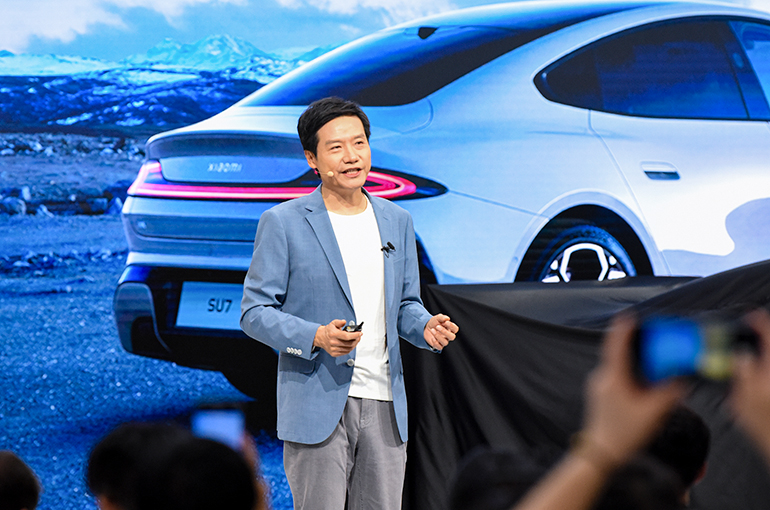 Xiaomi Auto Denies Claims 'Spontaneous Combustion' Caused Fire in Fatal SU7 Car Crash
Xiaomi Auto Denies Claims 'Spontaneous Combustion' Caused Fire in Fatal SU7 Car Crash(Yicai) April 2 -- Xiaomi Auto, the car production arm of the Chinese electronics giant, has rebutted claims made online that the fire that followed the deadly highway crash involving one of its SU7 cars was due to “spontaneous combustion.”
The fire following the crash, which claimed the lives of three university students, resulted from severe damage to the vehicle's systems after it violently collided with a concrete post on the highway, Xiaomi Auto said yesterday.
The three students were killed on March 29 when the SU7 they were in collided with a guardrail on a highway at a speed of about 97 kilometers per hour in the city of Tongling and caught fire, a spokesperson for Xiaomi Auto said on Weibo yesterday. They were traveling from Hubei province to Anhui province for an examination.
Individuals claiming to be relatives of the deceased alleged on online video platforms that the Xiaomi SU7 "exploded after the traffic accident" and that “the doors couldn't be unlocked, making escape impossible.”
Xiaomi Auto has not yet had access to the vehicle involved in the crash and cannot analyze and conclude whether the doors could have been opened after the accident, the Beijing-based company noted.
On the issue of whether the Automatic Emergency Braking function was triggered, Xiaomi Auto said that after the Navigate on Autopilot system issued an "obstacle warning," the car began decelerating. About one second later, the driver took control, and the NOA mode disengaged.
The SU7 standard version has forward collision avoidance assistance features, which include Forward Collision Warning and AEB, to detect other autos, pedestrians, and two-wheeled vehicles, Xiaomi Auto noted. The AEB works at speeds of between 8 and 135 km/h and functions similarly to systems with comparable configurations in the industry, meaning it does not respond to traffic cones, water barriers, rocks, animals, or other such obstacles, it added.
Lei Jun, founder, chairman, and chief executive of Xiaomi, took to Weibo to express deepest condolences on behalf of the company for the tragic loss of three lives in the accident and extended his sincere sympathies to their families.
Xiaomi will continue to cooperate with the police investigation, follow up on developments, and make every effort to address the concerns of the families and the public, Lei stressed.
Prior to the accident, the SU7 was operating in NOA mode and was moving at a constant speed of 116 km/h, Xiaomi Auto said.
The crash happened in a construction zone where traffic had been redirected to the opposite lane using barriers, Xiamo Auto said. The car detected obstacles, issued alerts, and began decelerating, with the driver then taking manual control to slow down further and steer the car before it hit a concrete post at about 97 km/h, Xiaomi Auto added.
After the collision, Xiaomi Auto immediately contacted the vehicle's owner and confirmed that the car was driven by someone else, the firmsaid, adding that the SU7's emergency response system automatically alerted rescue teams and notified police and medical services.
The police promptly arrived at the scene and began investigating, with Xiaomi Auto's task force actively cooperating with the investigation, evidence collection, and related procedures under their guidance, it said. The company also said it will continue fully cooperating with the police, strictly adhere to the investigation's findings, and ensure complete transparency.
Editor: Martin Kadiev